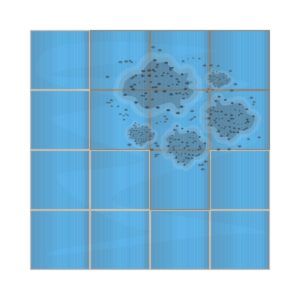Most of us have been stuck inside for months. We’re trying to stay safe by limiting our trips to places that are heavily occupied to prevent getting ill during the pandemic that’s been present for two years. It’s a good precaution to prevent contracting the coronavirus.
But while you’re at home more, have you thought about the air you are breathing there? It may not give you COVID-19 but it could definitely be detrimental to your health. You may want to consider having your home professionally tested to determine just how healthy (or unhealthy) it really is. One common pollutant that exists in many homes is mold.
Conditions that May Indication You Have Mold Growth

You may be thinking, “Why would I get an air quality test if I don’t have mold?” The answer to that question is “Because you may not even know you have it.” Wouldn’t it be obvious if you have mold? Yes and no. Let’s look at some signs that you might want to consider getting professional mold testing.
1. You Can See the Mold
If you can see visible mold growing on surfaces, then that’s a no-brainer; of course you have it. But you’d be surprised how much mold is growing in places that aren’t so obvious. It could have spread behind the drywall, beneath floors, inside ceilings, etc. Without a professional air quality test, it won’t be discovered unless and until the structure is torn away.
2. You Have High Humidity
Mold needs moisture to grow. Even if mold isn’t visible, humid conditions are a breeding ground for mold growth. Signs that your home’s interior could have high humidity levels include:
- Condensation on windows
- Your bathrooms don’t have exhaust fans or they aren’t used consistently
- Your basement is not waterproof
- You’ve had plumbing problems with water leaking
- You’ve experienced flooding
When water and moisture aren’t completely dried up, mold can start growing within 48 hours. So if you have some of these issues, an air quality test can pick up traces and where the mold is growing.
3. You Notice a Musty Smell
Musty odors are often signs of mold growing. During mold’s growth cycle, it releases odors during certain times. If you notice a musty smell, you need an air quality test to determine if it’s caused by mold and what types. Even if there is no smell, other factors could indicate mold growth, so mustiness should not be your only source of suspecting mold exists.
4. People Living in the Home Suffer from Allergies
Of course, allergies can result from several causes. But if mold is growing indoors, pre-existing allergies will worsen, and new allergies will develop. Some common mold-related symptoms include:
- runny nose and congestion
- eye irritation
- sneezing
- coughing
- sore throat
- skin rash
- headache
- lung irritation
- wheezing
If you notice anyone living in the home who develop these symptoms or their pre-existing allergies worsen, it may be from mold growth.
5. Mold Remediation Efforts Are Planned
When you know you have mold, you should solicit the assistance of a reputable professional mold remediation specialist. Any such company will need to know the specifics of the mold growth, like where it’s located, the extent of its presence, and what type of mold it is. Any professional who is experienced with mold remediation will do their own tests to determine this. They have specialized tools and equipment that can pinpoint these issues so that remediation is thorough and complete.
Does a DIY Air Quality Kit Work?
Yes, there are DIY kits available for you to test for mold growth in your home. However, they are not sophisticated enough to identify the type of mold fungi. There are 100,000 different types of mold, many of which appear similar or change in color and texture depending on the stage of the growth cycle. Remediation methods can vary depending on the type of mold found. Besides, if you have mold growing, your next step should be to call a professional remediation company to get rid of it.
When you call St. Louis Cleaning and Restoration for mold issues, they will automatically test your home with specialized equipment to determine the best course of action. Give them a call to learn more about their mold remediation services. They also provide water and fire damage restoration and cleanup, as well as several commercial services like COVID-19 sanitizing, air duct cleaning, carpet and upholstery cleaning, and kitchen hood cleaning.
St. Louis Cleaning and Restoration is also available for emergency response service because sometimes issues can’t wait. Their initial consultation for any service is free, so give them a call today to schedule a visit.

